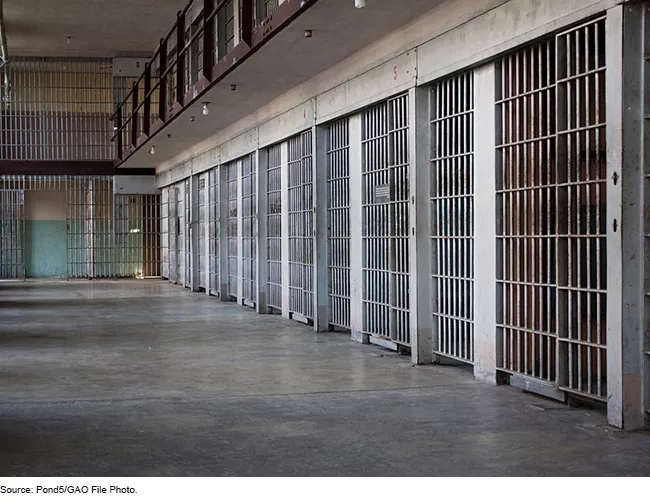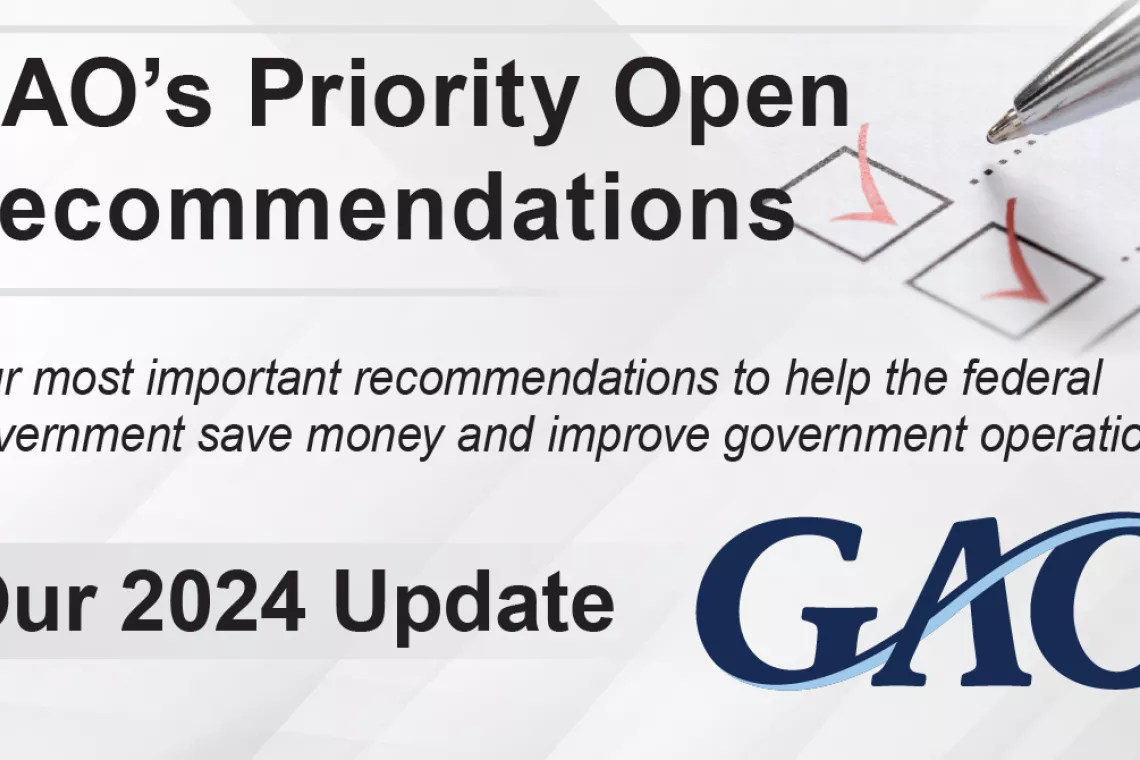Allegations of Employee Misconduct in Federal Prisons Are on the Rise. What’s Being Done About It?
Correctional officers and other prison employees are responsible for keeping people in prisons safe—including from other inmates or from self-harm. But what happens when these employees are the ones causing the harm?
Each year, the Federal Bureau of Prisons receives thousands of employee misconduct allegations—and allegations are on the rise. These range from minor issues like unexcused absences to major incidents like abuse.
Today’s WatchBlog post looks at our new report on how the Bureau of Prisons handles employee misconduct and what more needs to be done to keep people in prisons safe.
Image

What are the allegations of misconduct and how are they reported?
More than 155,000 people are serving sentences in 120 facilities nationwide. And more than 35,000 Federal Bureau of Prisons employees are responsible for their care and safety.
To help ensure this safety, the Bureau of Prisons trains all employees on how to conduct themselves when interacting with inmates and each other.
But despite these actions, the bureau received nearly 15,000 allegations of misconduct last fiscal year from those living and working at federal prisons.
What are the allegations of misconduct? The most frequently alleged types of misconduct were generally unprofessional conduct or failure to follow policies. These include things like using profane language and harassment of people living or working in prisons.
Other common allegations were about employees being absent without leave or failing to follow a supervisor’s instructions. For example, some employees refused to work overtime as required by their supervisors. These kinds of allegations increased during the last 10 years.
While not criminal, these behaviors can impact workplace culture and strain staff resources.
Criminal misconduct made up about 14% of allegations between fiscal years 2014-2024. These included allegations of physical and sexual abuse. For example, a federal prison in California closed in 2024 after a former warden, chaplain, and other employees sexually abused incarcerated women.
How are allegations investigated or resolved?
The Bureau of Prisons mostly investigates misconduct allegations internally, though other agencies handle a small portion of serious, potentially criminal investigations. If the investigation finds enough evidence to support the allegation, the bureau disciplines the employee. This could involve suspension or firing.
But, as of February, the bureau had more than 12,000 employee misconduct cases awaiting investigation or discipline. Almost 40% of those cases had been open for 3 or more years.
Length of Time Misconduct Cases Had Been Open, as of February 2025
Image

Bureau officials told us that the longer a case drags on, the more difficult it is to hold employees accountable for misconduct. As time passes, the employee who the allegation was about may not remember the details of the incident when investigators question them. Or the employee might leave the bureau before being disciplined.
Delays can also cause employees to question whether the bureau takes misconduct seriously. This could in turn dampen morale or fail to discourage poor behavior.
What more can be done to address concerns about misconduct?
We found areas where the Bureau of Prisons could improve its approach to addressing employee misconduct.
Use of data. The bureau collects data on employee misconduct and compares this information from one year to the next. But it doesn’t track trends about types of misconduct across longer periods. This means the bureau is missing opportunities to identify trends and address them.
Backlog of misconduct cases. The bureau has hired more investigators and taken other steps to reduce the number of open cases. However, it continues to miss its own goals for reducing the backlog of cases and doesn’t have a plan for meeting those goals.
Employee training. The bureau trains employees to prevent misconduct but doesn’t use their feedback to evaluate the training’s effectiveness. By not doing so, the bureau could be missing opportunities to improve the design and delivery of training needed to prevent employee misconduct.
We made recommendations to help the bureau address these issues in our new report. GAO’s 2025 High Risk List also emphasized threats to prison safety—like understaffing—which can exacerbate employee misconduct. To ensure that incarcerated people are treated humanely and keep its facilities secure, the bureau needs to address these issues and improve its approach to holding employees accountable.
Learn more about employee misconduct at the Federal Bureau of Prisons by reading our new report.
- GAO’s fact-based, nonpartisan information helps Congress and federal agencies improve government. The WatchBlog lets us contextualize GAO’s work a little more for the public. Check out more of our posts at GAO.gov/blog.
- Got a comment, question? Email us at blog@gao.gov.
GAO Contacts
Related Products

GAO's mission is to provide Congress with fact-based, nonpartisan information that can help improve federal government performance and ensure accountability for the benefit of the American people. GAO launched its WatchBlog in January, 2014, as part of its continuing effort to reach its audiences—Congress and the American people—where they are currently looking for information.
The blog format allows GAO to provide a little more context about its work than it can offer on its other social media platforms. Posts will tie GAO work to current events and the news; show how GAO’s work is affecting agencies or legislation; highlight reports, testimonies, and issue areas where GAO does work; and provide information about GAO itself, among other things.
Please send any feedback on GAO's WatchBlog to blog@gao.gov.




